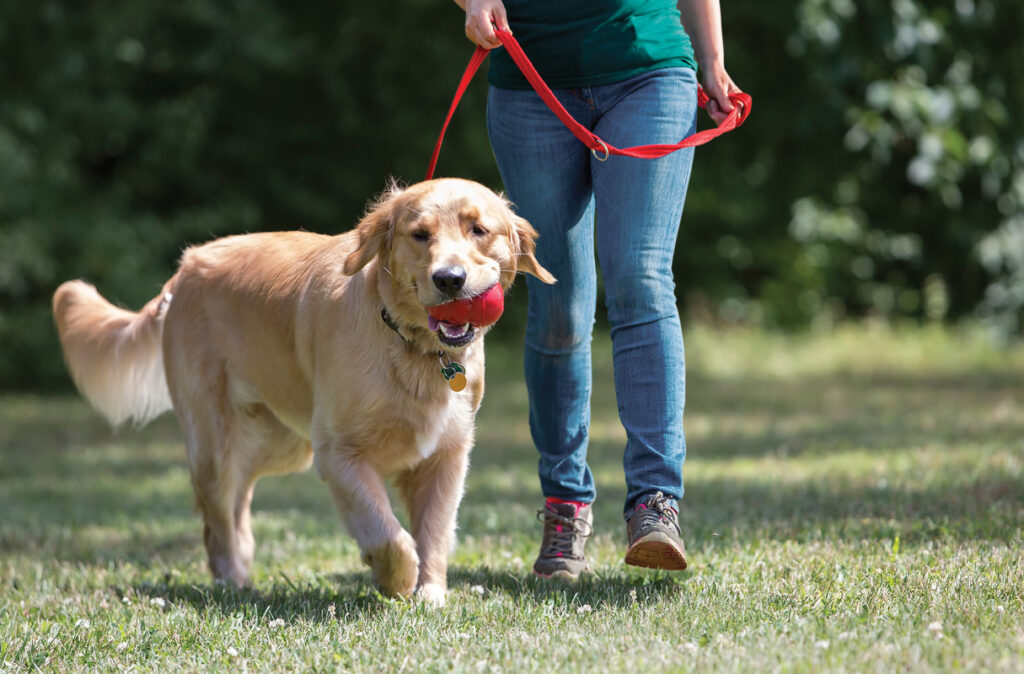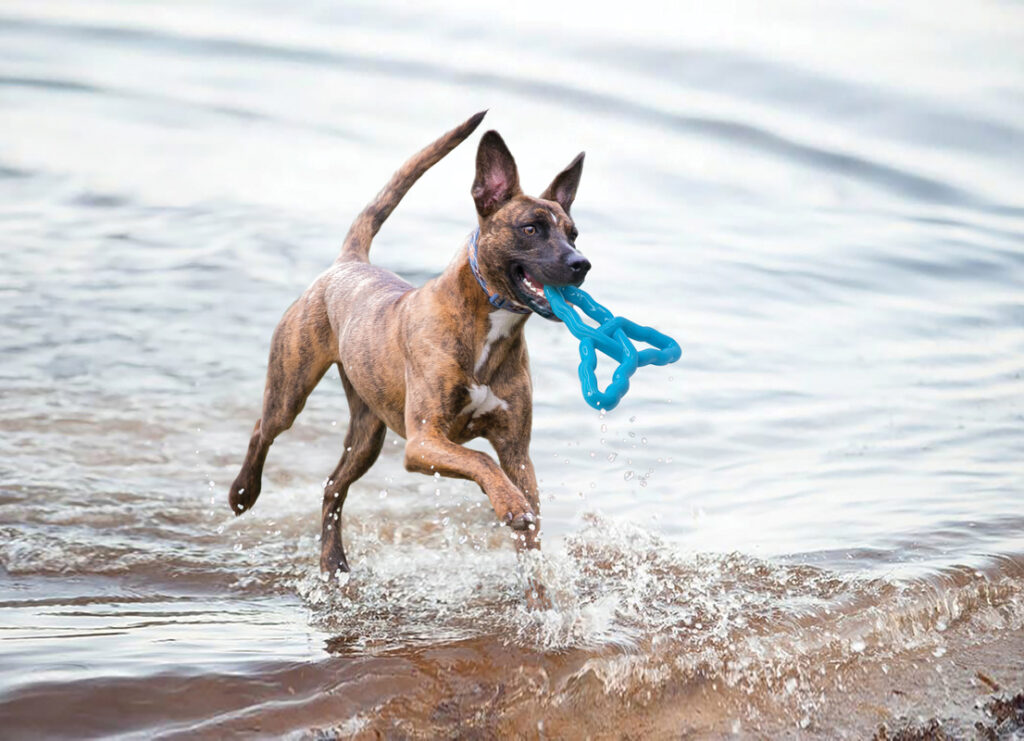If you have ever seen your pup biting at their paws? Have their poor paws been inflamed, swollen, or otherwise angry-looking? If your dog has ever had trouble with their paws, pododermatitis may be to blame.
What Is Pododermatitis?
Pododermatitis isn’t just an ailment by itself. It is a catch-all for inflammation of your dog’s paws and the skin around their paws, nails, and pads. It can be caused by a number of reasons, like allergies, infections, or diseases. It might be difficult to treat as there are a multitude of reasons why your dog’s paws are looking so painful, and a diagnosis may not be crystal clear.
You can compare this to having an upset stomach. You recognize that your stomach hurts, but you may not know the exact reason why. Are you coming down with a stomach bug or food poisoning? Maybe it’s appendicitis? Or could it just be gas?
As you can see, there could be a number of causes with varying severities for your stomach to hurt — the same idea with pododermatitis.
Let’s discuss this condition, how to recognize it, and when to ask for help.
Symptoms of Pododermatitis
Multiple symptoms might suggest Pododermatitis. Your dog’s symptoms will likely all depend on what is causing the pododermatitis and how severe it has gotten. One of the most tell-tale signs is if your dog is licking or biting at their paws.
The skin between their toes may be infected, as well as the skin between paw pads and where their nails grow. Your dog may have open sores on their paws, and it can be a varying combination of how many sores are on each paw.
You may also see hair loss on their paws, as well as redness and swelling of the pads. Depending on the severity of the infection, you may even see bleeding and discharge.
These symptoms can show on just one paw, all of their paws, or a combination. Your dog may not be able to walk on one or more of their paws as they may be tender and painful to put weight on, and your dog may be rendered lame.
Causes of Pododermatitis
As mentioned, there are multiple causes of pododermatitis. Some may be more mild, like allergies, while other causes may be a little more serious and require specialized treatment. Let’s look at a few of the different reasons why your dog could be experiencing pododermatitis.
Allergies
If you’ve recently moved to a new area and your dog likes to play or roam outside, they could be allergic to the grass or other outside matter. The season can also have an impact on what plants are growing outside, and your dog could be allergic to one certain plant or pollen.
This may cause your dog’s paws to become inflamed only during the fall or spring. Your dog’s diet may also be the culprit, especially if you noticed any symptoms after you changed their food. Common food allergens for dogs include fillers and even frequently-used meats, including chicken.
Parasites
Demodex is a parasitic mite that can be found on the fur of your dog’s paws. When it comes to pododermatitis being caused by a parasite, Demodex is usually the cause.
If present in large numbers can cause bleeding and swelling of your dog’s paws. Demodex can be difficult to get rid of, but there are multiple treatments that your vet can recommend, like antibiotics or medicated dips.
Infection
If your dog has gotten a deep cut on their paw, numerous types of bacteria can enter the cut and cause pododermatitis. Symptoms attributed to infection are swollen, bleeding areas in between the toes.
Hormonal
Hormone issues, like hypothyroidism (under-active thyroid) or Cushing’s disease, can prevent your dog’s immune system from fighting off infections. Your dog would then likely be more susceptible to bacteria-causing pododermatitis.
Weight Changes
If your dog is overweight, their paws may struggle to their weight equally. The paws may be supporting an unequal load and the paws that are under more stress may start to become inflamed.
The shorter hair follicles cause this inflammation in the paw to be ingrown. This becomes a vicious cycle of inflammation and infection.
Diagnosis
Anytime you see symptoms or your dog’s paws are in not so great condition, you will definitely want to consult your vet.
Trying to diagnose the reason behind the pododermatitis can be the hardest part. There are so many culprits that could be causing your dog’s paws to be in the shape they are in. Your veterinarian will likely pluck hair from around the paw area and will also take some skin scrapings to see if they can detect the presence of bacteria or parasites.
If an infection is believed to be the cause, swabs of the areas will be taken to see if any bacteria can be detected. Allergy testing may also be conducted if there is a clear pattern to the symptoms (only during particular months or visiting certain areas).
Blood tests may be necessary if your veterinarian believes the cause to be hormonal or caused by an immune disorder. You’ll also likely answer questions about your dog’s health history, including their diet and any previous health issues.
How To Treat Pododermatitis
The type of treatment your dog receives is based on what diagnosis is made as to what the root cause of the pododermatitis is.
If the pododermatitis is caused by allergies that your dog may have to the surrounding environment, this will be an ongoing treatment as your dog will still need to go outside to use the bathroom, go on walks, and play.
This will likely become a proactive plan, with wiping or washing off your dog’s paws when you come inside and applying any medication when their paws look to be a little inflamed. If your dog allows it, it may be helpful for them to wear booties over their paws for protection from the allergen.
Pododermatitis caused by parasites (more than likely by Demodex) can be hard to eradicate from your dog’s paws. Your veterinarian will come up with a care plan and will want to schedule frequent rechecks to ensure all of the mites are gone. There may be multiple treatments planned just in case the first few do not work.
Treatment With Medication: Oral and Topical
If there is any infection present in your dog’s paws, they will be prescribed antibiotics and possibly antifungals until the infection clears up. The medication type, dosage, and use will depend on the type of bacteria detected from any swabs taken.
You may also be given topical treatments, like medicated creams or foams to apply to your dog’s paws to help soothe any inflammation and bleeding.
Suspected hormonal problems may need to be controlled with medications and rechecks to make sure that blood work is showing an improvement with prescribed medications. Other medications may be prescribed to help with any inflammation or itching.
Treatment With Lifestyle Changes
If your dog’s pododermatitis is caused by weight, a diet plan is likely to be recommended. Your dog will unlikely be able to exercise while their paws are in bad shape. Once they lose some weight and take some load off of their paws, the veterinarian may then give the all-clear for doggie shenanigans to commence once more.
While your dog’s paws are healing, they may need to wear a cone so they cannot bite at their feet. This would be a great time to give your dog toys to help them take their mind off of their paws and more on their toys.
If your dog is unable to interact with the toy while their cone is on, carefully keep an eye on them while they play with the toy with the cone off. Puzzle toys with tasty treats inside will be sure to keep your dog focused on the toy and not their paws. Never leave your dog unattended if you remove their cone.
Luckily, there are many types of cones; some dogs prefer blow-up donut-shaped cones to the hard plastic. Some tolerate see-through cones better, and others like the blue, soft fabric ones.
Taking a Pause To Heal Their Paws
It can be so hard to see when your furry friend is in bad shape, especially when it comes to their paws. Happy tippy taps, after-bath zoomies, and fun afternoon walks are all affected when your dog is dealing with pododermatitis. Not even to mention the worry you may have when the underlying cause has not been diagnosed yet.
Signing up for a KONG Club account to reach out to an AskVet veterinarian is a great place to start. Your AskVet veterinarian can help with initial questions and may create a plan for your dog. They are always available to chat, so you can voice any concerns you may have at any time of day or night.
Sources:
Demodicosis most common underlying cause of persistent pododermatitis | DVM360
Managing chronic pododermatitis | Veterinary Ireland Journal



